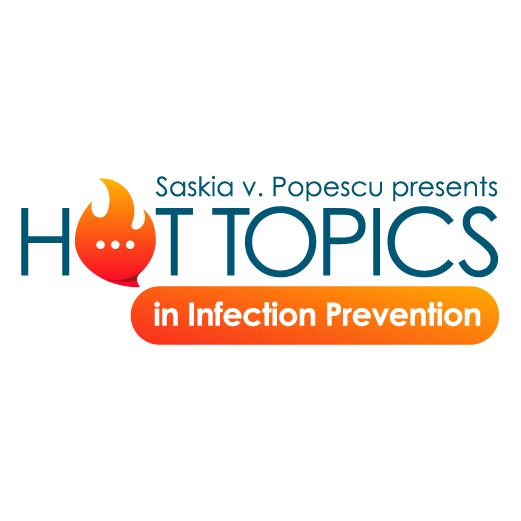IPC Hot Topics for April 6, 2025: Another Measles Death, Biocontainment, and More
This week’s Infection Control Today’s Hot Topics in IPC discusses the latest in the measles outbreak, biocontainment, Group A Strep, and more.
Hot Topics with Saskia v. Popescu, PhD, MPH, MA, CIC

A Second Pediatric Measles Death
Sadly, another child has lost their life to measles as a result of the outbreak in Texas. The Texas Department of State Health Services reported on April 8, 2025, that there have been 505 cases since January, 57 hospitalizations, and 2 pediatric deaths. The CDC issued a health care alert for medical providers, noting the outbreak has resulted in 607 total cases, mostly impacting Texas and New Mexico (roughly 90% of cases). In total, there have been 3 measles-related deaths—one in an unvaccinated adult in New Mexico, and the 2 aforementioned unvaccinated children in Texas.
The CDC alert shared, "Since January 1, 2025, 12% of reported measles cases in the US have been hospitalized. The Texas Department of State Health Services reported a third measles death in an unvaccinated child on April 6, 2025. The risk of measles remains low for most of the US due to high immunization coverage and rapid case identification and response efforts.”
The Indiana Department of Health announced its first measles case—an unvaccinated minor – and Colorado reported its second case, “an unvaccinated Denver County infant resident under 1 year old. Babies normally get the routine dose of measles, mumps, and rubella (MMR) vaccine at 12 to 15 months. The infant recently traveled with family to an area of Chihuahua, Mexico, which is experiencing an ongoing measles outbreak.”
Sarah Zhang of The Atlantic wrote recently on the current measles outbreak and how the complications are increasingly risky for adults. “The risk from measles follows a U-shaped curve, Neal Halsey, a measles expert and professor emeritus at Johns Hopkins, told me. On the left are children under 5, whose still-maturing immune systems might struggle to fend off the virus. On the right are adults; the rise in mortality gets steeper and steeper over time, eventually surpassing the mortality in young children. When measles managed to reach isolated villages in the past—such as when a sick sailor brought it to a remote part of Greenland in 1951—outbreaks on 'virgin soil' proved especially deadly for adults. Of the 77 people who died in Greenland then, 59 were over the age of 35. Measles may be a classic childhood illness, but it mostly killed adults there.”
Looking to Up your Biocontainment Unit Game?
A new issue of the Health Security journal focuses on the management of high-consequence infectious diseases with this specialized focus—from improving the safety and comfort of health care workers caring for patients to transport and building clinical capacity—this issue is highly informative and shares insights from a range of global researchers and frontline responders.
US Invasive Group A Strep (GAS) Is On the Rise
A new article in JAMA recently drew attention to current US trends of GAS infections across 10 states from 2013 to 2022, noting an increase in overall incidence from 3.6 to 8.2 per 100,000 persons.
The authors noted that “surveillance in 10 US states identified 21,312 cases of invasive GAS from 2013 through 2022, including 1981 deaths. The majority of cases (57.5%) were in males. Among case-patients, 1272 (6.0%) were aged 0 to 17 years, 13 565 (63.7%) were aged 18 to 64 years, and 6474 (30.4%) were 65 years or older; 5.5% were American Indian or Alaska Native, 14.3% were Black, and 67.1% were White. “
Other News Insights and Articles Worth Reading:
- Dr Oz, CMS, and AI? The newly confirmed Centers for Medicare & Medicaid Services (CMS) lead, Mehmet Oz, MD, MBA, had his first all-staff meeting this week, in which artificial intelligence (AI) came up heavily, including using avatars over frontline health workers.
- We’ll likely see impacts on US health care supplies, ranging from personal protective equipment to pharmaceuticals. Here’s an interesting research letter in JAMA. If you can't access it, you can find more insights here.
Uncovering a Hidden Risk: Alcohol Use Disorder Significantly Increases C difficile Infection Rates
April 10th 2025A groundbreaking study reveals a strong connection between alcohol use disorder and increased risk for Clostridioides difficile infection, challenging traditional assumptions and calling for enhanced infection prevention protocols.
Bridging the Gap: Operating Room and Central Processing Unite to Improve Surgical Efficiency
April 8th 2025Communication breakdowns between the operating room and central processing led to delays and frustration—until collaboration, cross-training, and shared goals turned metrics around and strengthened teamwork.